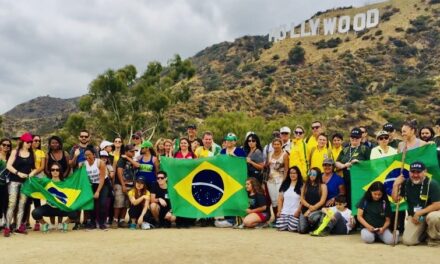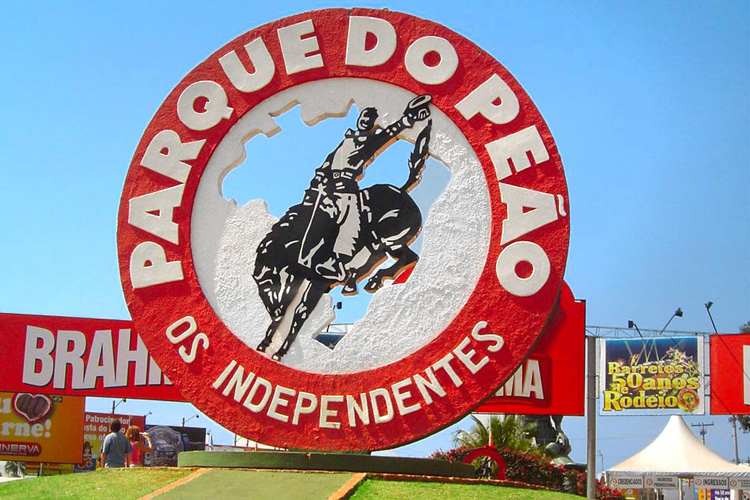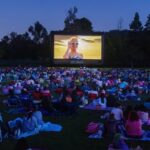By Mark Lund
 Johnny Rice is a legend of the Californian surf. A born surfer who rides his waves during the week, and shapes boards during the weekend in his back yard. Johnny likes to say that surfing is good in 4 ways: physically, mentally, emotionally and spiritually. This 79-year old man descends from the Native American lineages of Santee Dakota Sioux nativo and Prairie Band Potawatomi. His parents grew up in an Indian reservation far from the ocean, in Dakota.
Johnny Rice is a legend of the Californian surf. A born surfer who rides his waves during the week, and shapes boards during the weekend in his back yard. Johnny likes to say that surfing is good in 4 ways: physically, mentally, emotionally and spiritually. This 79-year old man descends from the Native American lineages of Santee Dakota Sioux nativo and Prairie Band Potawatomi. His parents grew up in an Indian reservation far from the ocean, in Dakota.
Johnny’s love for surfing begun after he arrived in South California, in the late 40’s, and was exposed to the surfing culture. This native of Santa Cruz, CA, lives and breathes what he preaches.Nowadays, with his own business, Johnny — an old coast guard officer — sets up his own working schedule according to the ocean and waves conditions. He also has the possibility to travel whenever he wants to other surf destinations. Shaping boards for other people is a way of making people happy, what makes Johnny really happy with his work.
Only a few people know, but this Santa Cruz legend carries with him a bit of the history of the 1970’s Brazilian surf. He arrived in Brazil in 1974, at the age of 36. His passion for surfing started much before his arrival in Brazil. Eleven years after being born half Sioux, half Patowami, Johnny started surfing. The picture that registers that moment, integrates today, one of the most important surf museums in California.
Like any other boy totally taken by the love for surfing, he tried to make a living off it. His luck came at age 14, when his family moved to LA. He was invited to learn to shape boards with the Godfather of board shapers: Dale Velzy. He worked with Velzy in a surfshop in Venice Beach, CA.
Later, in 1957, he brought back to Santa Cruz the skills acquired by Velzy. There, he worked with the Mitchell Bros., who opened the first surfshop in town. His passion, along with the headstart given by Velzy, kept Johnny well estabilished during the golden years of the Californian surf.
Johnny watched the arrival of fiberglass on foam blank. It was probably a little sad having to say good-bye to wood. But after getting acquainted with the new synthetic material, Johnny realized it was much lighter, easier to work with, and less expensive. It was, therefore, what was missing to turn a sport of only a few people, into a fad for many. He was also present when another synthetic material came into the scene. This one would eliminate the big problem of the California ocean cold water: the neoprene (of which wetsuits are made).
Johnny was already active in Santa Cruz when Jack O’Neill, one of the largest surf brands, opened in 1959. After the success of the surf fashion, Hollywood realized the potential of Malibu lifestyle. When they started filming “Gidget” among others, Johnny was there, applying to work as an extra, doing the surf scenes. A little after that, in the mid 60’s, he lived in Hawaii, where he worked with George Downing, as one of Waikiki’s “Beach Boys.” A job that allowed him to earn his bucks with his “feet in the sand,” and his free time surfing the best Oahu waves. In the late 60’s, when the Californian surf fever diminished, he went to Florida. During the surf boom on the east coast, he worked shaping hundreds of boards per month, listening to a music that inspired him. While his peers listened to the Beach Boys, Johnny preferred Bossa Nova, Tom Jobim and João Gilberto.
Johnny started dreaming
Johnny started dreaming of visiting Brazil where these songs came from. Many times, when a dream becomes a desire, it has the power to influence one’s destiny. One day, in the early 70’s, he crossed the way of Alan Birnbaum and Sérgio Sachs, two Brazilian surfers from São Paulo, who invited and convinced him to take a risk shaping boards in Brazil.
 He did not hesitate, and without a job and any guarantee, he got on a plane with his first wife and children, Dominic, Sabrina and Anastasia. In São Paulo, Johnny went straight from the airport in Congonhas, at the state capital, to Guarujá, on the coast. There, at the Tombo Beach, he set up what would be his operations headquarters for almost the next 5 years.
He did not hesitate, and without a job and any guarantee, he got on a plane with his first wife and children, Dominic, Sabrina and Anastasia. In São Paulo, Johnny went straight from the airport in Congonhas, at the state capital, to Guarujá, on the coast. There, at the Tombo Beach, he set up what would be his operations headquarters for almost the next 5 years.
The time of the Glaspac boards was over in the coast of São Paulo. When Johnny arrived, carrying thousands of hours of experience shaping boards, he met the visionary work of important people of São Paulo surf, like Homero, the Twin brothers, and Thyola. Established at the Tombo, he started training helpers. Many people that bought his boards still remember the status and pleasure of surfing a “Johnny Rice.” Many ideas and many trained people left that room to influence the development of the Brazilian design.
But his influence was even stronger.He also put together one of the first local surf groups, sponsoring athletes with his own money. A good example of this contribution was through his contact with the natives of Tombo, the simplicity of its people, the charisma and enthusiasm of those young surfers. As Johnny still says in Portuguese with strong accent, “Brazilian very nice people.”
Johnny helped humble youngsters like “Tinguinha,” who didn’t even have money to buy a surfboard, become a well-known Brazilian surfer and an important person in the world surf scene. An unusual gesture that, in the following decades, would turn sponsorship into the main co-player of today’s Brazilian surf industry. Years of experience gave him an eye for real talents. Thus, like Tinguinha, he sponsored other guys that were not very known at the time, and are today important members of the surf world: Neno Matos, Neco Carbone and Alfio Lagnado. The latter is today a successful entrepreneur, owner of “Hang Loose,” one of the largest brands of Brazilian surfwear and accessories, known worldwide.

Johnny with a Long Board
Perhaps it was the difficulty to obtain a permanent visa. Or maybe the alcohol (he hasn’t drunk or smoked in 10 years). Or even a secret Johnny carries with him (he believes it’s important to preserve some ancestral traditions, so he rather not talk about some past experiences). For one reason or another, the doors closed to Johnny, and his time in Brazil came to an end. In 1978, he left the country. But here comes the most beautiful part of the story. Johnny never stopped loving Brazil.
On the opposite: today he makes a point to speak Portuguese, tells Brazilian jokes, sees the funny side of the Brazilian mannerism, keeps his memories in albums, shows souvenirs collected during his stay, puts a lot of feeling when saying the word “saudade,” and reveals a deep as well as surprising desire. His dream is to get a permanent visa that would allow him to live part of the year in Brazil. With so many people saying bad things about Brazil, it’s wonderful to hear a full-blooded American saying he loves that country and its people.
Today, after having lived in Brazil, after having gotten rid of two addictions, and over 50 years of surf and shaping boards, Johnny Rice, known in his tribe as Mni Akan Mani (Walks on Water), is a happy man, who’s found something very important. He found himself and has been able to lead a life making surfboards whenever he desires, surfing with his second wife and companion, Rosemari (with whom he used to surf during college years!). He has fun and contributes to the cool atmosphere of one of the most traditional surf towns in California, living in a little house that looks more like a small surf museum, with boards of all types and sizes, colorful rugs, oil paintings of his favorite surf spots, and old pictures of old surfer friends.
Johnny hasn’t gotten tired of making surfboards yet. He really finds pleasure in doing it. Living in his little house for over 30 years, which is right by one of the most famous places in California, and with this unique lifestyle, what else could he want? To get a permanent visa to live in Brazil, buy a house right on the beach in the Brazilian Northeastern coast, lead a simple life with Rosemari, and finally be able to say: “I’m Brazilian!”.
*Update: Johnny Rice, a well-known Santa Cruz surfboard shaper whose traveling career began in 1950, died of pneumonia in July 2015 at the age of 77.
* Mark Lund, the author, is one of these Americans in love with Brazil. He’s been living in Maresias Beach, in the state of São Paulo, for over 30 years. He puts together professional surf events and championships, and also owns a bar called “Legends.”
















Your the Man Johnny. I was born in florida. My mother is Brazilian and my father is American of english, creek indian and irish decent. I also love Brazil, its my other country where I lived long ago. I went there in 1962, I dont remember anything being that I had not even had my first birthday party yet. I also was surfing there in the seventies at pria grandge sp. When I move there lets paddle out together. You and yours will always be welcome in my home. I think my cousin had one of your boards, Ill try to find a photo and you can tell me. I would really enjoy meeting another surf brother from the good old days. We can talk story. Take care Carey
I just looked up Johnny Rice in California to try to meet. I’m very sorry and send my condolences to his family for there loss. We had much in common that I just learned about. He will be missed by many. Sincerely Carey Morris
I’m his daughter Sabrina and this info. Is not 100% accurate.
This is Sabrina, Johnny’s oldest daughter. There are many untruths in this write up.
Hi guys .. I am now trying to live here in Brazil Sao Bernardo do campo having arrived here from South Africa and shaping and repairing boards etc .. I wanted to know is there anyone out there looking for a sander sprayer fin installer etc.. please I have my little boy here and my girlfriend and want to live here in Brazil .. Anyone that could help please .. Rolf FICA com deus
Hi Sabrina!… Met your father in 1976 at Tombo beach..I was living in Guaruja at the time, at Enseada beach. I was 7 years old then. I started surfing with a Styrofoam boad when I was 6. I remember hearing about the American surfer that was living at Tombo beach and one day I took my bicycle with my board and went there…I couldn’t believe that a American surfer was there..I was so happy!…I peddled 8 miles to Tombo beach on a Saturday to see for myself..I remember your father just like it was yesterday. I just found out (07/18/2019)that he passed..I can’t describe to you how affected I’m right now… a part of my childhood is gone. I moved to NYC in 1988 and it’s been only 6 month that I lefted it to Florida. I was hoping to go to California one day and see your father again…Im destroyed right now. God bless his soul..Im sure his out there surfing through the stars!